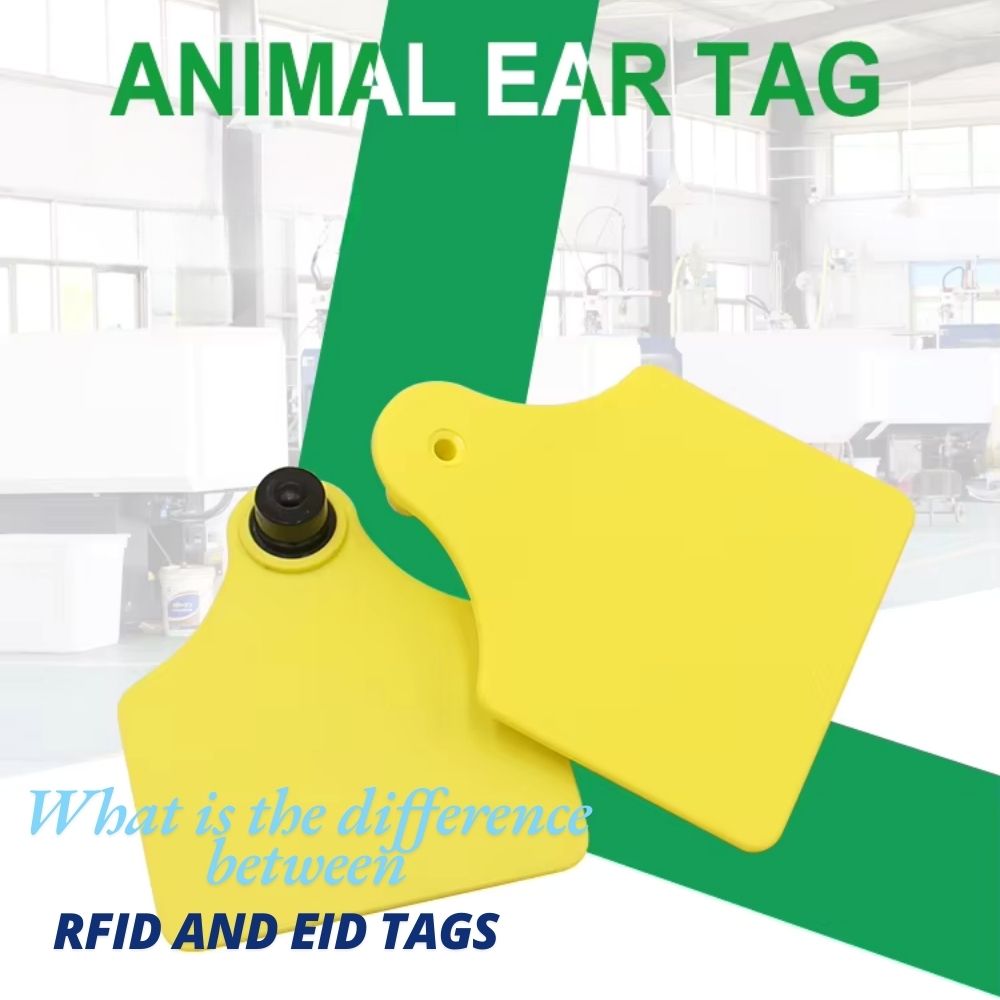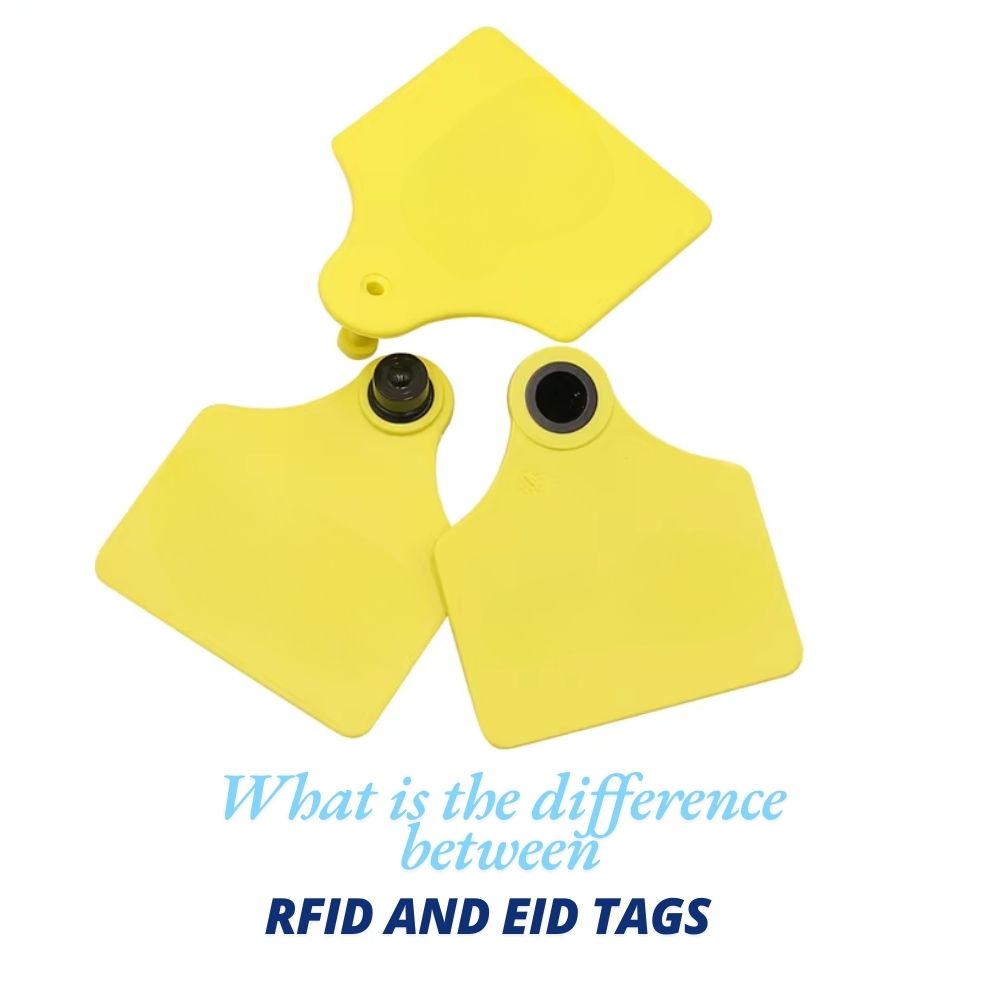
What is the difference between EID and RFID tags?
Table of Contents
The Complete Guide to RFID Ear Tags: Modern Livestock Identification and Management
This comprehensive guide explores RFID ear tags, electronic identification (EID), and modern cattle tracking systems. Whether you’re a seasoned rancher or new to livestock management, this article will help you understand the latest technology and best practices for animal identification.

Why Electronic Identification Matters
- Improved traceability and food safety
- Enhanced record keeping capabilities
- Streamlined livestock management
- Compliance with regulations
- Better animal health monitoring
What Are RFID Ear Tags and How Do They Work?
The foundation of modern livestock identification lies in RFID ear tags, which combine traditional visual identification with advanced electronic technology. These tags use radio frequency identification to transmit unique identification numbers to specialized readers, enabling quick and accurate animal tracking.Key Components:
- Electronic transponder
- Visual identification number
- Durable outer casing
- Specialized locking mechanism
Types of Electronic Identification Tags Available
There are two main types of RFID ear tags used in livestock:
- HDX (Half Duplex) Tags
- More resistant to interference
- Longer read range
- Higher cost
- FDX (Full Duplex) Tags
- More affordable
- Shorter read range
- Better for smaller operations
How Do RFID Readers Scan and Process Tag Information?
Modern RFID readers come in various forms:
- Handheld wands
- Fixed panel readers
- Portal systems
These devices capture tag data and can:
- Transfer information to management software
- Store readings for later use
- Provide immediate animal identification
Benefits of Using Electronic Ear Tags vs. Traditional Methods
| Electronic Tags | Traditional Tags |
|---|---|
| Instant reading | Manual checking required |
| Less error-prone | Human error possible |
| Data automation | Manual record keeping |
| Better traceability | Limited tracking ability |
What Are the USDA Requirements for Electronic Identification?
The USDA has specific requirements for official identification, including:
- Unique 15-digit number format
- Approved tag manufacturers
- Proper application procedures
- Interstate movement compliance
How to Choose the Right RFID Tag System for Your Operation?
Consider these factors when selecting an RFID system:
- Operation size
- Budget constraints
- Management goals
- Environmental conditions
- Existing infrastructure
Common Challenges and Solutions in RFID Tag Implementation
Challenges:
- Tag retention
- Reader reliability
- Data management
- Cost considerations
Solutions:
- Proper application techniques
- Regular system maintenance
- Staff training
- Strategic implementation

Frequently Asked Questions
How long do RFID ear tags typically last?
RFID ear tags are designed to last the entire life of the animal, typically 5-7 years with proper application and maintenance.
What happens if an RFID tag stops working?
If an RFID tag malfunctions, it should be replaced immediately following proper protocols and updating records accordingly.
Can RFID tags be reused?
No, RFID ear tags are designed for single use only and cannot be transferred between animals.
Are RFID tags weather-resistant?
Yes, quality RFID tags are designed to withstand various weather conditions and environmental factors.
Comments
Hot Products

What Is RFID Waste Management
Imagine a city where every trash bin speaks — not literally — but through a tiny chip that tells the system when it’s full, when it’s emptied, and where it went. That’s what RFID waste management is doing today.

What are Bolt Seals and their Applications? | Complete Guide
In global trade and logistics, bolt seals play a crucial role in ensuring cargo security and compliance. These small but powerful devices are designed to lock shipping containers, trailers, and cargo doors with a tamper-evident mechanism.

What is an RFID Card Protector? Benefits, Use Cases, and Buying Guide
RFID technology (Radio Frequency Identification) is everywhere: in your credit cards, ID badges, transit passes, hotel room keys, and more. It offers speed and convenience, but it also opens the door to a new kind of digital theft called “skimming.” That’s where an RFID card protector comes in.

RFID Wristbands for Events: Bulk Buying Guide for Organizers
RFID wristbands for events are becoming the go-to solution for organizers who need faster entry, fraud prevention, and cashless payments at concerts, festivals, and sports venues. Unlike paper tickets or QR codes, these smart wristbands use embedded chips to streamline access, secure transactions, and improve the guest experience.

How RFID Tag on Windscreen Improves Vehicle Access Control and Toll Systems
In today’s fast-paced world, vehicle identification needs to be quick, secure, and contactless. An RFID Tag on the Windscreen provides exactly that — a reliable way to manage toll collection, parking, and gated access without stopping vehicles.

The Benefits of RFID Linen Tags in Commercial Laundry
Managing laundry in hospitals, hotels, or large laundry services is a big job. Each day, thousands of sheets, towels, and uniforms are washed, sorted, and sent back out. But problems like lost linens, sorting mistakes, and manual counting can cost companies a lot of money. For example, mid-sized hotels can lose over $200,000 each year from missing linens.
That’s where RFID Linen Tags come in.
Tags
RELATED BLOGS

What Is RFID Waste Management
Imagine a city where every trash bin speaks — not literally — but through a tiny chip that tells the system when it’s full, when it’s emptied, and where it went. That’s what RFID waste management is doing today.

What are Bolt Seals and their Applications? | Complete Guide
In global trade and logistics, bolt seals play a crucial role in ensuring cargo security and compliance. These small but powerful devices are designed to lock shipping containers, trailers, and cargo doors with a tamper-evident mechanism.

What is an RFID Card Protector? Benefits, Use Cases, and Buying Guide
RFID technology (Radio Frequency Identification) is everywhere: in your credit cards, ID badges, transit passes, hotel room keys, and more. It offers speed and convenience, but it also opens the door to a new kind of digital theft called “skimming.” That’s where an RFID card protector comes in.




